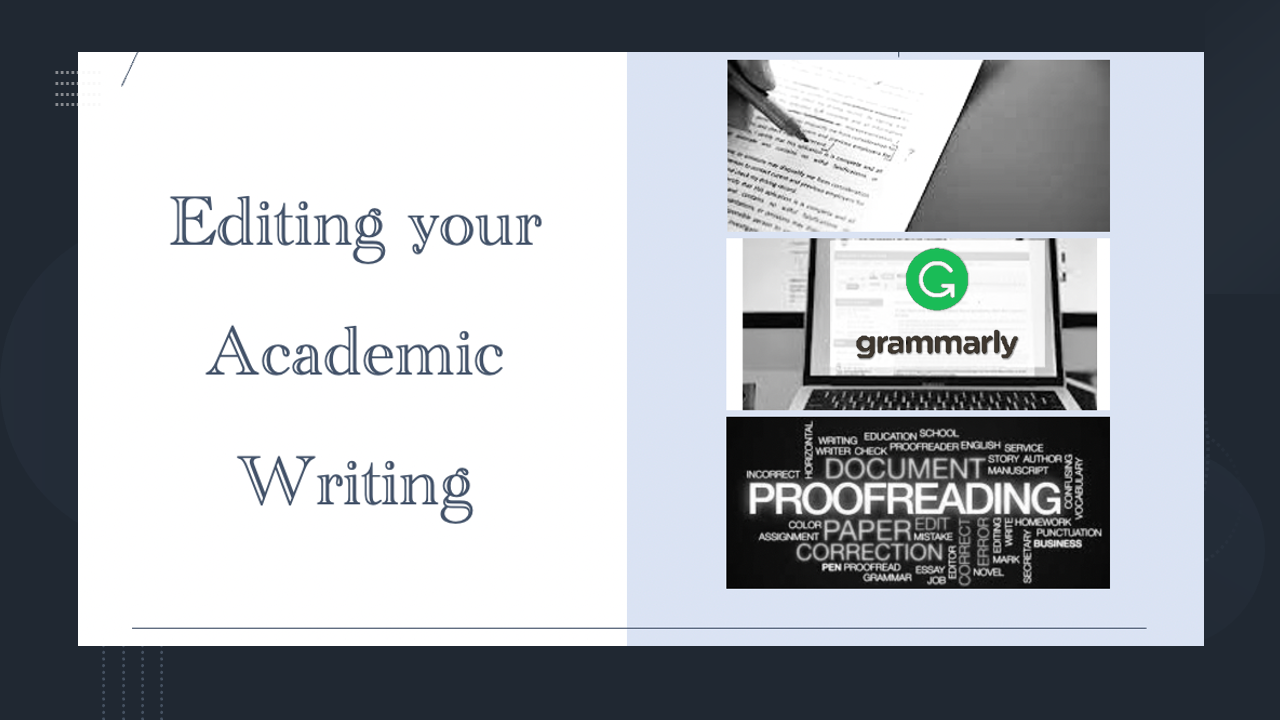Academic Writing with Grammarly: Insights from Personal and Educational Use
(Nisha Malhotra, Ph.D.)
Four years ago, I started using Grammarly, which has been a time-saver, especially for editing lengthy reports and manuscripts. Reviewing Grammarly’s feedback has indeed helped enhance my writing skills. I have also encouraged my students to utilize Grammarly for editing their assignments, requiring them to submit both edited and unedited versions along with notes on the improvements made.
Grammarly’s Core Features
- Grammar Checking: Identifies and corrects grammatical errors.
- Style Improvements: Suggests ways to enhance clarity and readability.
- Plagiarism Detection: Checks for potential plagiarism against a vast database.
- Personalization: Adapts to individual writing styles and preferences.
- Context-Based: Ability to provide suggestions that are contextually appropriate.
Other than identifying errors- it’s numbers 4 and 5 above have kept me hooked on Grammarly despite its pricing.
Grammarly In Academia
For Students
Resear ch has shown that students using Grammarly exhibit more linguistic variation. Studies by Dizon & Gayed (2021) and Fitria (2022) highlight Grammarly’s effectiveness in enhancing writing quality. Since, Grammarly considers context when providing corrections, helping students quickly and precisely improve their writing (Fitria, 2021).
ch has shown that students using Grammarly exhibit more linguistic variation. Studies by Dizon & Gayed (2021) and Fitria (2022) highlight Grammarly’s effectiveness in enhancing writing quality. Since, Grammarly considers context when providing corrections, helping students quickly and precisely improve their writing (Fitria, 2021).
The fact that Grammarly now also provides plagiarism reports lends itself to assessing written assignments. Students can check their work before submitting their papers, similar to a decade ago when I would have my students submit their work through “turn it in.”
As others have found – It also saved me time in grading assignments. Miranty et al.( 2021) discuss how It not only facilitates easier evaluation of students’ work but also leads to better assignment results compared to traditional teaching methods.
Decolonizing Academic Publishing
Am I in favour of using AI support to write articles in English? Of course!
In academia, top journals mostly publish exclusively in English, which can (and does) inadvertently exclude excellent research conducted by (ESL) academics, preventing valuable findings from reaching a global audience. It helps non-English writers and researchers level the playing field, at least to some extent and fosters more equitable dissemination of knowledge
Grammarly – What Next ?

Where would I like to see Grammarly go next?
I think it should create packages tailored for specific subpopulations of users, such as Education (ESL), Higher Education In Sciences, Academic Publishing, etc.
Academic Publishing: I want a platform where I can edit my manuscript, get a detailed report on what and why each edit was made, and then get support in formatting references according to the different styles. Right now, I still like to design, structure and write my own content, so other AI platforms don’t appeal to me as much – and I would not recommend them for higher education.
Grammarly’s user database can also inform pedagogy in paper-based courses and changes in publication trends across regions. It would be fantastic if they could explore the relationship between user data and graduation timelines; one could analyze the submission patterns of final papers in universities based on area codes. This study could provide insights into how students from different regions engage with AI writing tools to meet their academic requirements. Additionally, investigating the most common grammar edits across user subpopulations categorized by their mother tongue could offer valuable information on language-specific writing challenges and preferences, potentially leading to tailored writing support tools for diverse linguistic backgrounds.
_______________
Dizon, G. and Gayed, J. (2021). Examining the impact of Grammarly on the quality of mobile l2 writing. The Jalt Call Journal, 17(2), 74-92. https://doi.org/10.29140/jaltcall.v17n2.336 Fitria, T. (2022). Identifying grammatical and mechanical errors of students’ writing: using “grammarly” as an online assessment. Lingua Didaktika Jurnal Bahasa Dan Pembelajaran Bahasa, 16(2), 169. https://doi.org/10.24036/ld.v16i2.116824 Miranty, D., Widiati, U., Cahyono, B. Y., & Suzila, T. I. (2023). Automated writing evaluation tools for Indonesian undergraduate English as a foreign language students’ writing. International Journal of Evaluation and Research in Education (IJERE), 12(3), 1705-1715.
How to cite: Malhotrta, N. (2024, May 19).Academic Writing with Grammarly: Insights from Personal and Educational Use. Instructional Design & Flexible Learning UBC Blog. https://blogs.ubc.ca/flexiblelearning/?p=518&preview=true
